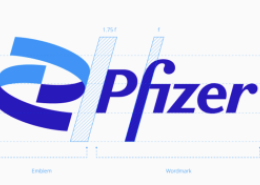Pfizer Presents New Opportunities for Global Growth
Accelerating Pipeline with Sharpened Focus on Key Disease Areas; Phase III Pipeline Expected to Grow to 24-28 Programs By End of 2009, Up from 16 Today Seizing Opportunities for Global Growth by Optimizing Patent Protected Portfolio, and Expanding in Emerging and Established Markets through Innovative Commercial Models Reaffirming 2008 Guidance; Continuing to Create a Lower, More Flexible Cost Base
(BUSINESS WIRE)--Pfizer Inc today reviewed strategies to accelerate and refocus Pfizer’s pipeline and capture new opportunities for global growth at a meeting for investment analysts.
“We have made real changes in how we operate our business – in our structure, culture and leadership – so that we have a much stronger foundation in place for pursuing the many opportunities before us,” said Chairman and CEO Jeff Kindler. “We are delivering and accelerating our pipeline, and we will seize promising growth opportunities spanning geographies, therapeutic areas and products.”
Kindler and his leadership team outlined their growth strategies including optimizing Pfizer’s patent-protected portfolio; generating revenue opportunities from established products; accelerating growth in emerging markets; focusing on continuous improvement and innovation; and investing in complementary businesses.
Accelerating Pipeline with Sharpened Focus on Key Disease Areas
Pfizer today updated its development pipeline, which is posted on www.pfizer.com.
“2008 marks the start of a multi-year period of increased productivity,” said Dr. Martin Mackay, president of Pfizer Global Research & Development. “We have made strategic decisions to focus internally and externally on high-value disease areas and to expedite compounds in our pipeline that will meet the future needs of patients and drive revenue growth.”
Throughout this year and the next, the Company anticipates a strong flow of medicines progressing from Phase II to Phase III. Pfizer expects:
- a total of 15 to 20 Phase III starts by the end of 2009 in disease areas ranging from cancer, to diabetes, to pain;
- to grow the number of Phase III programs by 50 to 75 percent, to at least 24 – and as many as 28 — by December 2009, up from 16 today; and
- 15-20 regulatory submissions between 2010 and 2012.
Pfizer announced that three key compounds expected to move to Phase III illustrate its commitment to finding innovative ways to address areas of high patient need: CP-751871, an IGF-1R inhibitor for the treatment of gastrointestinal, genitourinary, lung and breast cancer; CP-690550, our JAK-3 inhibitor for the treatment of rheumatoid arthritis, transplant rejection, psoriasis, Crohn’s disease, and asthma; and PF-734200, our DPP-IV inhibitor for the treatment of diabetes.
Pfizer has improved R&D productivity in the way it identifies the compounds most likely to succeed and has focused its resources on high-value areas. These high-value disease areas --including oncology, pain, diabetes/obesity, immunology/inflammation, schizophrenia and Alzheimer’s disease -- represent areas of significant unmet medical need and/or high market growth potential, and/or areas where Pfizer may be first or best in class. The Company is also accelerating clinical development on 20 programs in disease areas such as arthritis, cancer, pain and diabetes. It is also ending work on 24 clinical and preclinical programs so it can reinvest in high-value areas.
Pfizer continues to supplement its internal R&D efforts with the best external science to help deliver a high-value pipeline of new medicines. Through the execution of new business development deals, Pfizer added 7 clinical candidates, including 4 biologics, in 2007 in prioritized disease areas. The Company has expanded its venture capital activity and its early stage product investment strategy, including the establishment of the Biotherapeutics and Bioinnovation Center (BBC) based in California. The Company currently has 26 biologics spanning 8 therapeutic areas and has set the goal of becoming a top-tier biotherapeutics company.
Pfizer scientists described the Company’s strengths in researching and developing pain medicines, a $45 billion market with significant unmet medical need. They reviewed 13 programs across a spectrum of pain conditions, including 9 new molecular entities. This group includes three Phase III programs, valuable potential new indications for market-leaders Celebrex and Lyrica, and trials of S,S reboxetine for fibromyalgia. In addition, Pfizer’s nine pain compounds in development include the monoclonal antibody PF-4383119, and the p38 kinase inhibitor PH-797804, both designed to treat pain by regulating the inflammatory process.
Seizing Opportunities for Global Growth
“We see a range of promising growth opportunities over the next three to five years where we will take advantage of our global scale,” said Ian Read, president of Worldwide Pharmaceutical Operations. “We will run our business with much more flexibility as we continue to empower Pfizer colleagues closest to our customers.”
To advance these growth opportunities, the Company highlighted innovative commercial models that take advantage of its broad portfolio of medicines and its significant global footprint spanning R&D, manufacturing, sales and marketing to change the way it meets the needs of customers around the world.
Optimizing the Patent-Protected Portfolio. The company will continue its focus on delivering revenue from patent-protected medicines, seven of which are global market leaders in their disease areas. Revenues from certain in-line medicines including Geodon, Xalatan, Zyvox, and Vfend are growing at double-digit rates, and revenues from new medicines Chantix, Lyrica and Sutent more than doubled to $3.3 billion in 2007, versus $1.5 billion in 2006.
The Company is also establishing a new Business Unit focused solely on oncology in its Worldwide Pharmaceutical Group. This unit will bring together global oncology functions including clinical development, medical affairs, commercial development, sales and marketing. It will have the resources to seize growth opportunities to strengthen Pfizer’s research investment in oncology, a market expected to more than double in the next decade. The Oncology Business Unit will enable the Company to expedite launches of novel oncology agents, as well as to focus research efforts on cancers common in Asia, including those of the liver, esophagus and nasopharynx.
Seizing Growth Opportunities in Emerging Markets. Pfizer also announced plans to capture greater revenue in emerging markets in Latin America, Eastern Europe and Asia. The company will leverage its global scale and breadth of products to provide health solutions to the growing and untapped market of middle-income patients living in these markets.
The Company pointed out four drivers that will help it expand in the $47 billion emerging Asian pharmaceutical market. Pfizer expects to reinforce its market leadership, increasing market share to 6% by 2012, up from 4% today. These drivers include expanding its existing presence in high growth markets, building leadership in oncology, tailoring portfolio offerings to local market needs and taking greater advantage of global manufacturing and R&D in Asia.
For example, Pfizer plans to expand operations in China from the 110 cities it now serves to more than 650 cities. Growing established products (medicines that have lost or will soon lose patent protection), launching new products and reaching more patients will enable Pfizer to continue to capitalize on its strong base in China, a country expected to be one of the world’s top five healthcare markets as early as 2010.
Forming Dedicated Business Unit for Established Products. The Company recently formed an Established Products Business Unit within Worldwide Pharmaceutical Operations, with the goal of achieving double-digit growth in the global market for established medicines. The newly formed unit will execute growth strategies tailored to the unique needs of branded emerging markets (such as China, India, Brazil and Russia), branded traditional markets (such as Japan, Western Europe and South Korea), and intellectual-property-driven markets (such as the United States and Canada).
The Company expects to increase market share by leveraging its existing portfolio through product enhancements and reformulations, pursuing new indications for niche markets, and intensifying late-stage lifecycle plans for its established medicines.
“By pursuing growth strategies in the right geographies, with the right products and business models, we will drive change, seize opportunities and create value for customers,” said Read. “We are meaningfully diversifying our risk, which will be a significant advantage to us as we compete in this fast-changing marketplace.”
Reaffirming 2008 Guidance and Continuing to Create a Lower, More Flexible Cost Base
Chief Financial Officer Frank D’Amelio reaffirmed Pfizer’s financial guidance for full-year 2008(1):
- Revenue range from $47 to $49 Billion
- Adjusted total costs(2)(3)decrease of at least $1.5-$2 billion on a constant currency basis(4)
- Adjusted cost of sales(2)as percentage of revenue range from 14.5% to 15.5%
- Adjusted SI&A expenses(2)range from $14.4 to $14.9 Billion
- Adjusted R&D expenses(2)range from $7.3 to $7.6 Billion
- Reported diluted EPS range from $1.78 to $1.93
- Adjusted diluted EPS(2)range from $2.35 to $2.45
- Effective tax rate(5)range from 22% to 22.5%
- Cash flow from operations range from $17 to $18 Billion
The Company is continuing to create a lower, more flexible cost base to align with revenues by expanding upon certain cost management initiatives, such as increasing outsourced manufacturing and further reducing the global real estate footprint.
“We are proactively managing our total cost structure to do what is necessary to size the company appropriately to align with our revenues so that we deliver growing profitability after the Lipitor loss of exclusivity,” said D’Amelio. “As a result, we expect to continue to generate industry-leading operating margins in a percentage range of the mid- to high- 30s.”
(1) At January 2008 exchange rates.
(2) "Adjusted income" and its components and "adjusted diluted earnings per share (EPS)" are defined as reported net income and its components and reported diluted EPS excluding purchase-accounting adjustments, acquisition-related costs, discontinued operations and certain significant items. Adjusted Cost of Sales, Adjusted SI&A expenses and Adjusted R&D expenses are income statement line items prepared on the same basis, and therefore, components of the overall Adjusted Income measure. As described under AdjustedIncome in the Management’s Discussion and Analysis of Financial Condition and Results of Operations section of Pfizer's 2007 Form 10-K, management uses adjusted income, among other factors, to set performance goals and to measure the performance of the overall company. We believe that investors' understanding of our performance is enhanced by disclosing this measure. Reconciliations of full-year 2008 adjusted income and adjusted diluted EPS guidance to full-year 2008 reported net income and reported diluted EPS guidance are provided in our 2007 Form 10-K, filed on February 29, 2008. The adjusted income and its components and adjusted diluted EPS measures are not, and should not be viewed as, substitutes for U.S. GAAP net income and diluted EPS.
(3) The total of Adjusted Cost of Sales(2), Adjusted SI&A expenses(2) and Adjusted R&D expenses(2).
(4) At 2006 exchange rates.
(5) On adjusted income.
DISCLOSURE NOTICE: The information contained in this press release is as of March 5, 2008. The Company assumes no obligation to update any forward-looking statements contained in this release as a result of new information or future events or developments.
This release contains forward-looking information that involves substantial risks and uncertainties about the Company’s in-line products and product candidates, financial results and estimates and business plans and prospects. Among other things, the release contains, in particular, forward-looking information that involves substantial risks and uncertainties (i) about various products in development and potential additional indications for certain in-line products, including their potential benefits, as well as projections with respect to the advancement of certain programs into Phase III and with respect to regulatory submissions for certain programs, and (ii) about the growth in certain business areas including, without limitation, established products, emerging markets and biotherapeutics. You can identify these statements by the fact that they use words such as “will,”“anticipate,”“estimate,”“expect,”“project,”“intend,”“plan,”“believe,”“target,”“forecast” and other words and terms of similar meaning. Among the factors that could cause actual results to differ materially are the following: the uncertainties inherent in research and development activities; decisions by regulatory authorities regarding whether and when to approve drug applications and supplemental drug applications that have been or may be filed for such products in development and for such additional indications for in-line products as well as their decisions regarding labeling and other matters that could affect the availability or commercial potential of such products and such additional indications; the speed with which regulatory authorizations, pricing approvals and product launches may be achieved; the success of external business development activities; competitive developments, including with respect to competitor drugs and drug candidates that treat diseases and conditions similar to those treated by our in-line drugs and drug candidates; the ability to successfully market both new and existing products domestically and internationally; difficulties or delays in manufacturing; trade buying patterns; the ability to meet generic and branded competition after the loss of patent protection for our products or competitor products; the impact of existing and future regulatory provisions on product exclusivity; trends toward managed care and healthcare cost containment; U.S. legislation or regulatory action affecting, among other things, pharmaceutical product pricing, reimbursement or access, including under Medicaid and Medicare, the importation of prescription drugs that from outside the U.S. at prices that are regulated by governments of various foreign countries, and the involuntary approval of prescription medicines for over-the-counter use;the impact of the Medicare Prescription Drug, Improvement and Modernization Act of 2003; legislation or regulatory action in markets outside the U.S. affecting pharmaceutical product pricing, reimbursement or access; contingencies related to actual or alleged environmental contamination; claims and concerns that may arise regarding the safety or efficacy of in-line products and product candidates; significant breakdown, infiltration or interruption of our information technology systems and infrastructure; legal defense costs, insurance expenses, settlement costs and the risk of an adverse decision or settlement related to product liability, patent protection, governmental investigations, ongoing efforts to explore various means for resolving asbestos litigation, and other legal proceedings; the Company’s ability to protect its patents and other intellectual property both domestically and internationally; interest rate and foreign currency exchange rate fluctuations; governmental laws and regulations affecting domestic and foreign operations, including tax obligations;changes in generally accepted accounting principles; any changes in business, political and economic conditions due to the threat ofterrorist activity in the U. S. and other parts of the world, and related U. S. military action overseas; growth in costs and expenses; changes in our product, segment and geographic mix; and the impact of acquisitions, divestitures, restructurings, product withdrawals and other unusual items, including our ability to realize the projected benefits of our cost-reduction initiatives. A further list and description of these risks, uncertainties and other matters can be found in the Company’s Annual Report on Form 10-K for the fiscal year ended December 31, 2007, and in its reports on Forms 10-Q and 8-K.
Media:
Shreya Jani, 212-733-4889
(cell) 917-743-4349
or
Investors:
Suzanne Harnett, 212-733-8009
or
Jennifer Davis, 212-733-0717








